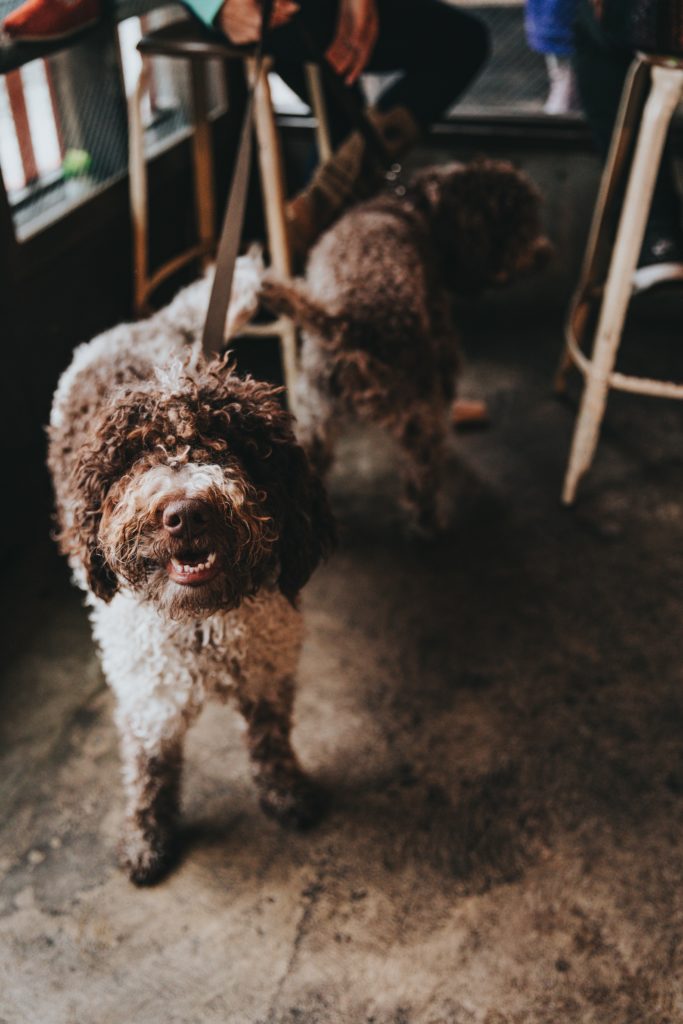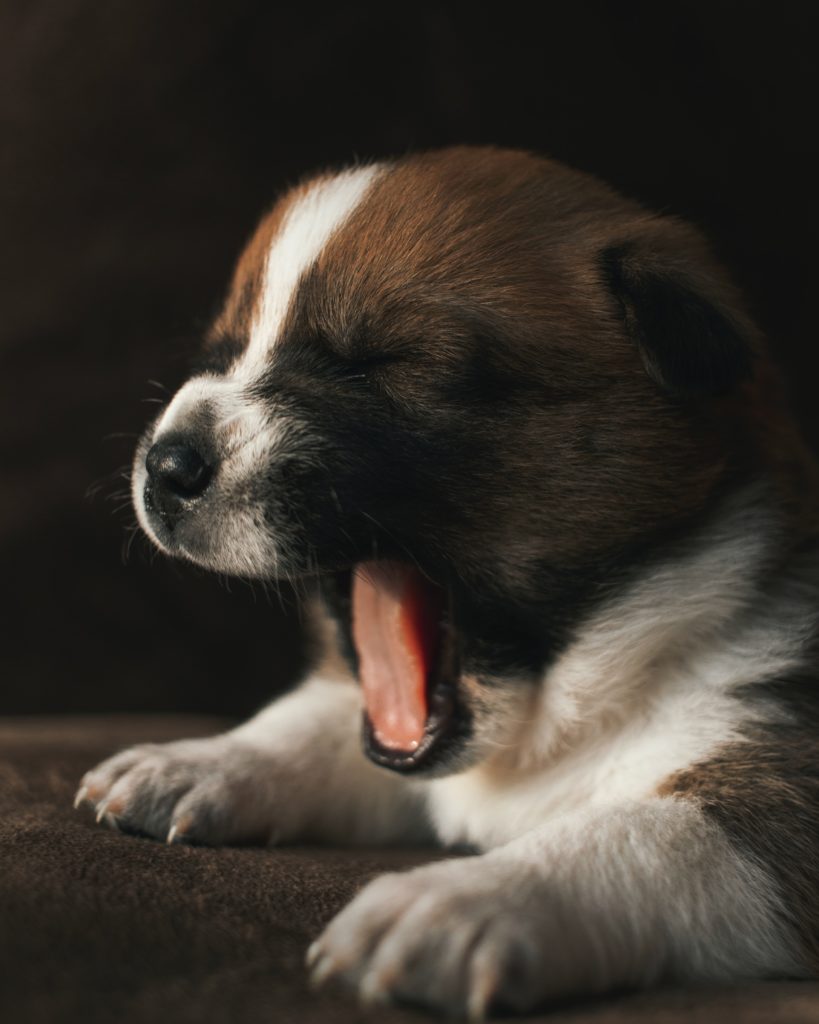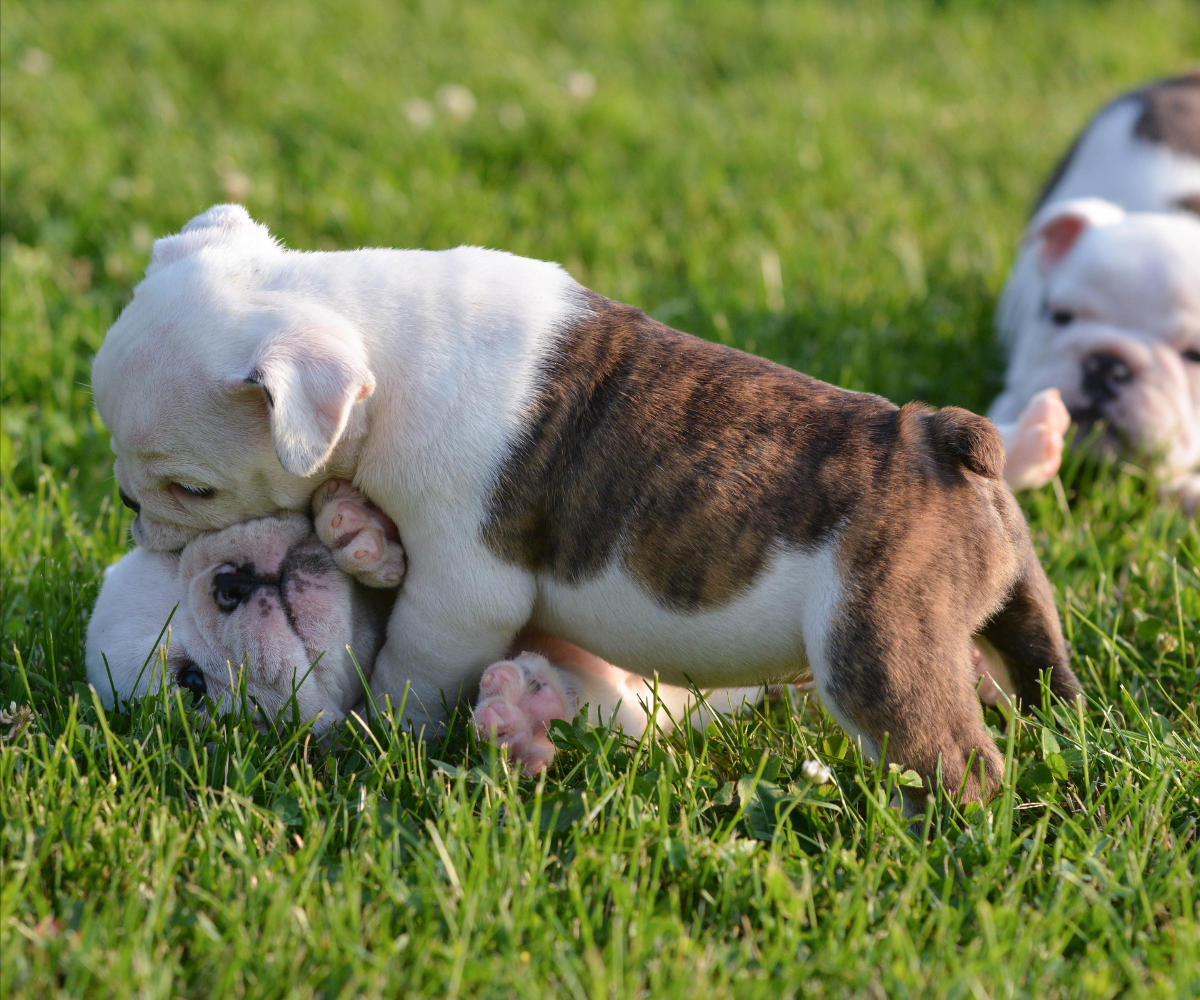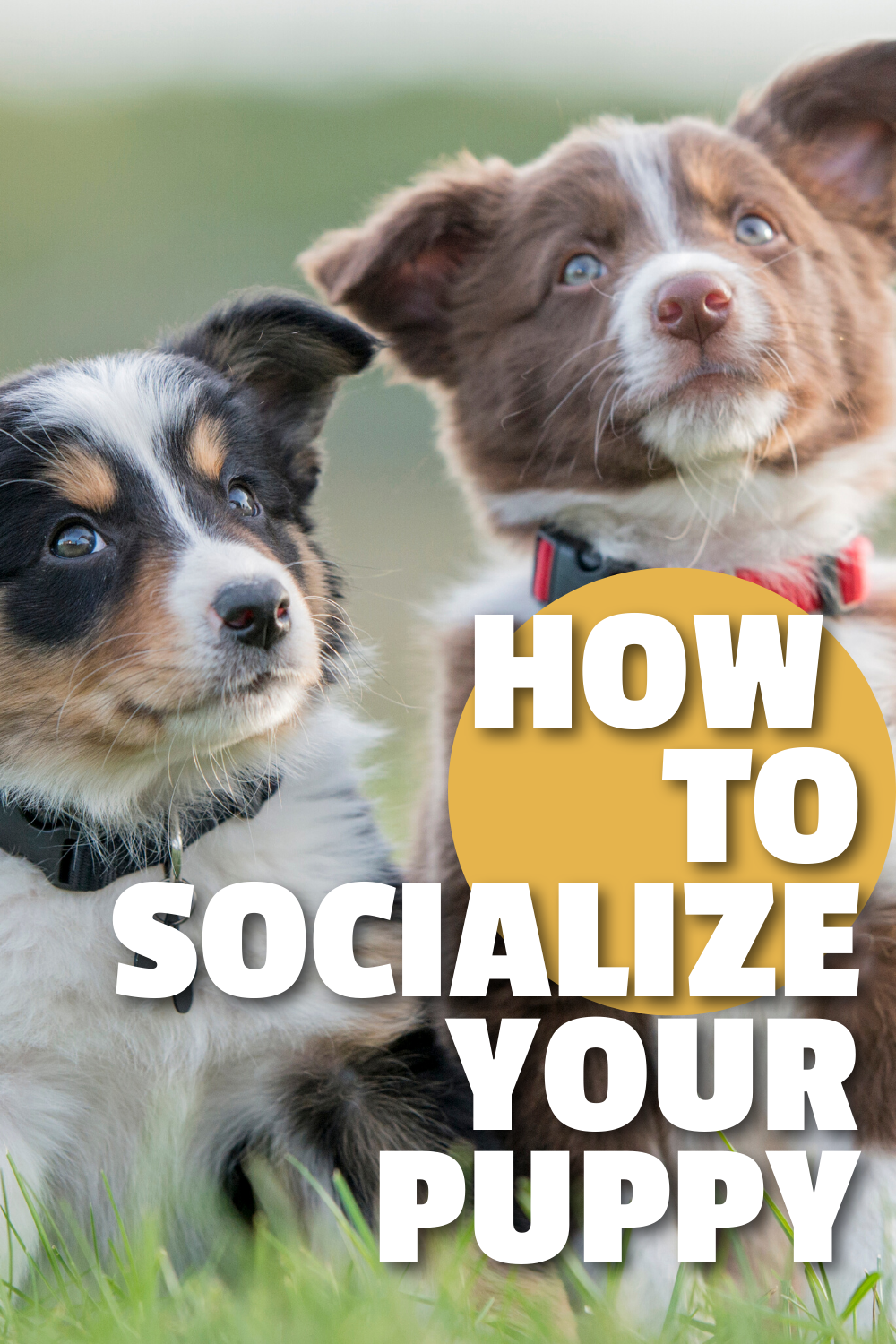Puppy socialization is a term many dog parents have heard, but may not actually understand properly.
When we think of socialization, we often think of it in the human context. Perhaps you imagine having people over for dinner, or grabbing a coffee and chatting with a friend. To us, socializing is doing things with other people.
Therefore, it’s not surprising that many puppy owners think socializing their puppy just means making sure they have time with other dogs.

That isn’t what puppy socialization means though!
In this article we will cover:
- What is puppy socialization?
- Why should I socialize my puppy?
- When should I socialize my puppy?
- How to correctly socialize your puppy
What is puppy socialization
So, if puppy socialization isn’t just play time with other dogs, what is it?
Socialization is exposure to anything with a positive influence. Essentially, it’s anything new to your puppy (for example: a man with a beard, a bike, grass, handling, or a vacuum) that you introduce carefully to make sure that they have a good time and therefore have a positive relationship with that new thing.
Puppy socialization is NOT just exposure! Exposure is putting your puppy in unfamiliar situations without an intervention. You simply expose them to something and let your pup decide whether that new thing is either great or scary. Don’t do that!
Many well-intentioned dog parents will take their puppy places to “show them new things”. However, this can backfire and make your puppy more fearful. Let’s use traffic sounds as an example. If you walk your pup down a busy street and they feel scared of the traffic noise, you may have just created a lifelong fear of traffic sounds. Proper socialization to traffic noise however would include making sure that they had a positive time, thereby helping prevent future fears of traffic sounds. We’ll get into the “how to” part of socialization later in this article.
Exposure= unfamiliar situation + letting pup decide whether it’s good or bad.
Socialization= unfamiliar situation + positive influence= puppy less likely to fear that thing in the future!

Why should I socialize my puppy?
It’s difficult to imagine giving your puppy to a shelter when you first get them, but unfortunately behavioral issues such as aggression and reactivity remain the top reason dogs are surrendered. In fact, behavioral issues are the number one cause of death for dogs under three years of age!
What’s one of the best ways to prevent behavioral problems in the first place?
Proper puppy socialization!
When should I socialize my puppy?
The first three months of your puppies life really can shape their future.
Puppies undergo a critical socialization period between 3-12 weeks of age. They’re quickly gaining knowledge and skills needed to form bonds and fit into society. Their brains are little sponges ready to learn! During this time you’ll get maximum impact for all socialization work you do. It’s still possible to socialize your dog after 3 months, but it takes more work for less return.
A good breeder will start this effort for you, then you’ll have a great opportunity to continue the socialization the first month they’re home.
Positive Paws made a wonderful “Puppy’s Rule of Twelve” socialization list for objects, surfaces, noises, etc to socialize your puppy to by the time they’re 3 months old. I highly recommend it! If the list feels overwhelming to you, make sure you focus on the ones that will definitely be part of your dogs life. Will your dog go on walks where there might be people biking by or traffic noise? Socialize those! Will they be around kids? Socialize to kids! Other common ones are car rides, men with hats or beards, the vacuum, and all kinds of grooming.
Really take the time to properly socialize your puppy the first month you have them. A well-socialized puppy is more likely to become a well-balanced, confident dog. Continue to commit to socialization as a lifelong process whenever your dog will experience something new!

How to correctly socialize your puppy:
In it’s most basic form, socialization is just making sure your puppy has a positive experience the first time they’re exposed to something.
Great… so how do you control whether your puppy has a positive time?!
First: you’ll be exposing your puppy to a REASONABLE dose of that thing.
For example, if you’re working on traffic noise exposure do not start with a really loud truck! Instead, go somewhere with muffled traffic noise and work your way to louder settings. For noise training Youtube also works really well!! You can find audio clips of traffic, vacuums, dogs barking, clapping, or anything else you can think of.
Second: Pair a primary reinforcer with the exposure to the new thing!
What’s a primary reinforcer? By definition it’s a stimulus that is biologically important to an organism. In simpler terms? It’s something naturally appealing to your dog without needing to be “taught”.
Here’s an example:
Going outside and sniffing is naturally rewarding for dogs. Therefore, it’s a primary reinforcer. What about a dogs leash? When first introduced a dogs leash is a neutral object. It means nothing to them. Over time however, the dog gets excited when they see their leash. Why? They’ve associated that leash = walk. You’ve associated a primary reinforcer (going outside) with a neutral object (leash) to give a positive meaning to the neutral thing. You can use this same concept to build a positive association with all new things!
One of the main primary reinforcers we use in force-free dog training is treats. Your puppy doesn’t have to be taught to like treats; they’re just naturally rewarding! We can therefore use treats (or any other positive reinforcer) to help a puppy create a positive association with something.

The key is that the newly exposed thing needs to be presented at a reasonable level!
Instead of starting at a “real world” level, break it into less scary steps and progressively work up.
Let’s say you want to socialize your puppy to bikes. Proper socialization isn’t going to be someone biking past them really quickly while you try to give them a treat! This will likely startle your puppy and cause a negative association.
Instead, begin by leaning a bike against a wall and reward your puppy for being curious about it. Once they appear fully comfortable being around a stationary bike, try moving the bike slightly and reward again. Then try walking the bike! If that’s ok, get someone to slowly bike past them.
The point is that you’ll be progressing slowly to a “real world” exposure level of someone quickly biking past. It’s ok if this takes times! At each stage monitor your puppy for signs of stress & fear such as whale eye (whites of the eyes), yawning, looking away, tucked tail, lip-licking, tucked ears, or panting. If your puppy appears stressed take a break and then try again at a lower intensity of exposure later.

Make a list of things that you feel your puppy should be socialized to, then break them down into baby steps!
Putting time & effort into properly socializing your puppy is one of the best things you can do for them.
Happy training 🙂
Disclosure: Happy Hounds uses affiliate links. Purchasing with these links will not cost you any extra, but I get commissions for purchases made through these links. Affiliate links help me to continue to offer free resources & blog posts. I would love if you used them!


Im very pleased to find this site. I need to to thank you for ones time for this particularly fantastic read!! I definitely really liked every part of it and I have you bookmarked to see new information on your site.
Thank you so much for the kind words! 🙂